Czech, comfortable and successful ... CZ 27 pistol
The gun had an original design with a rotating barrel and a bolt coupled to it, therefore it was very complex, and the gun itself turned out to be very expensive in production. And although an improved version was introduced in 1922, the company managed to release only 35000 Vz.22 and ceased its production as early as 1926. Therefore, in the 1924, the model Vz.24 was adopted, improved by Czech engineers. The appearance of the Vz.24 was similar to its predecessor, and differed slightly (for example, the other was the magazine release button), but the main difference was the caliber of the new pistol: it was made for the more popular cartridge 7,65 mm. The production of the new model began in June at the new factory 1926, and by the year 1937 released about 190000 of such pistols. But the sophisticated mechanism of the Vz.24 pistol remained a “tough nut” for production workers. To some extent, its deficiencies were eliminated only later on the model Vz.27.
In Czechoslovakia, Vz.24 was produced until the very end of the thirties as a regular pistol of the Czechoslovak army and up to the very beginning of the Second World War, and also supplied for export. After the German occupation of Czechoslovakia, this pistol was produced in small batches, however, in 1944, its release was finally stopped.
CZ 27 / P.27 (t), produced for the needs of the Wehrmacht, as evidenced by the markings on the casing of the bolt.
Experts note that both Vz.22 and Vz.24 had an excessively complex structure for such a relatively weak pistol cartridge. I wanted something as effective, but more simple. And the model CZ 27 / P.27 (t), which is considered one of the most successful Czechoslovak developments among all other pistols, up to CZ-75, became such a model. During the years from 1927 to 1951, more than half a million of such pistols were produced, both for domestic consumption (in particular, they were armed by the police and security forces of the Czechoslovak Republic) and for export. During the Second World War, when the country was occupied by German troops, they continued to produce these pistols, but in the interests of the German armed forces, where they assigned the special index P.27 (t) to this pistol. Experts note that this gun differed from many other systems in a very thoughtful, durable and reliable design, and its main drawback was the use of a relatively low-power 7,65-mm Browning cartridge in it.
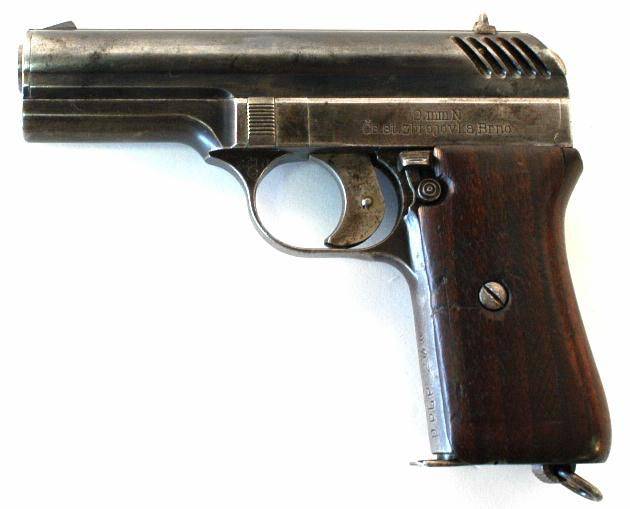
Gun Vz.22 caliber 9-mm.
This cartridge in 1897 was created by an American gunsmith John Browning, who needed a pistol cartridge for a small-sized pistol. He took the .32 Smith-Wesson cartridge used in revolvers as a basis and modified it accordingly. At the end of the same year, the production of a new patron was launched by the Belgian company Fabrika Natsionale.
Three years later, under this cartridge, Browning designed the gun - his famous FN Browning M1900. In 1903, the Colt company bought a patent for this munition, changing its designation, so that it became known as the .32 ACP.
Since then, this ammunition is considered perhaps the most common pistol cartridge in the world. It is clear that according to its characteristics it no longer meets the requirements of the twenty-first century, but ... its serial production continues, and there is constant work on its improvement.
Consider the gun CZ 27 / P.27 (t) more closely. He uses the principle of action of automatics "free gate", as well as the well-known Makarov pistol. But the barrel of the Czech pistol is not connected to the frame, although it remains stationary when fired. However, when disassembling a pistol, it can be separated from its frame, and the return spring is located in it under the barrel. The trigger mechanism has a single action trigger. The trigger almost all recessed into the casing of the shutter, but his finger can be squeezed. There is a round hole in the knitting needle. The fuse is very unusual, it can not be confused with anything: it is located on the left of the frame, just behind the trigger. And he ... double! That is, in order to turn on the fuse, you need to press down the small lever, but in order to then remove it from the fuse, you should press the button located below this lever. Here you can’t confuse what to press: “from top to bottom, then press” - it seems to be difficult, but in fact this method turns out to be quite convenient. The store in the handle is single-row, with a latch at the base of the handle, just behind the shaft of the store. It is believed that with this placement of the latch increases the reloading time of the gun, but it also minimizes the spontaneous disconnection and loss of the store. The store's capacity is 8 cartridges, which was traditional for pistols of those years. The handle has a straight front face and figure back. Cheeks made of plastic with the logo of the company in a circle.
As you can see, there are practically no protruding parts on the gun, so it is very convenient for wearing concealed.
The creator of the pistol was the engineer Josef Nickl. Industrial production of this gun was carried out with 1927 and 1955 year. When the Germans occupied Czechoslovakia, its production continued to arm the police units and Wehrmacht officers. But even after World War II ended, its production continued. It is believed that from 620 to 650 thousands of pistols were released (and 452 500 units were released during the years of the German occupation), and according to other sources, so all 700 thousands.
There is information that the CZ 27 pistol (another designation Vz.27, from Vzor is a model) appeared as a result of the work of the Czech engineer František Mouse, who simplified the design of the CZ 24. Now he was working according to the free shutter recoil scheme, and instead of using the 9-mm “short” cartridge used in it, 7,65-mm Browning was used. Externally, its design is characterized by the presence of flat side planes and characteristic vertical notches on the cover-gate. Fastening of the barrel is made in the "rusk way". The force on the trigger is approximately 1,9 kg., While its progress is smooth, and the return stroke is short.
The fly is unregulated, and the rear sight is fixed in a groove of the “dovetail” type, so that there is a possibility of side corrections. The pillar has a rather large V-shaped slot, which makes it easy to see the fly. Such aiming devices ensure effective operation at a distance of up to 15 meters, that is, it is more than enough to weapons such a caliber. Moreover, at this distance it provides the possibility of hitting a circle with a diameter of not more than 50 - 55 mm. The new gun was adopted by the Czechoslovak police and state security services, and also had a spread in the civilian arms market.
Even against the background of the design of modern pistols, this weapon looks good.
The first Vz.27 pistols were at the disposal of the German army after the occupation, and there they equally appreciated them and continued production under German control. In the German army, it was used from 1939 to 1945 year, with some of the samples Pistole 27 (t) was adapted for use with a silencer. To do this, the barrel was made elongated to 135 mm in the pistol, so that its muzzle end protruded from the casing-shutter, which had a thread for fastening a silencer on it. As already noted, the gun had a small size and weight, well, its main drawback was called not too impressive effect of the bullet due to the cartridge used in it. But all experts are noted for excellent shooting accuracy.
The personal impressions of the pistol are: “very flat, smooth and comfortable” in terms of holding in the hand. Lies very comfortable. Even a hand with short fingers covers the grip with great convenience. The gun is not heavy and easily controlled. Of course, to talk about a pistol as a weapon, you need to shoot from it (it’s not enough to hold it for him!), And not just one of them, in order to compare one or other samples. Nevertheless, it is possible to get a definite impression in this way. I would note that Vz.27 is very convenient to carry in the inner pocket of the jacket and convenient to get out of it, it does not cling to anything and is not too long. In general, it is not surprising that it was used by Czechoslovak security agents.
And here he is held in his left hand. As you can see, it is quite convenient to keep it, which means it is convenient to shoot.
In the USSR, this gun came as trophies, i.e. It was got from the killed German officers. The Czechoslovak partisans, accustomed to their native weapon, also used it. This should be remembered by modern cinematographers, that is, it is quite possible to use this Czechoslovak pistol in some of the movies about war and post-war crime.
Main characteristics
Caliber: 7,65-mm Browning
Gun length: 155 mm
Barrel length: 99 mm
Mass of a pistol without cartridges: 670
Store capacity: 8 cartridges
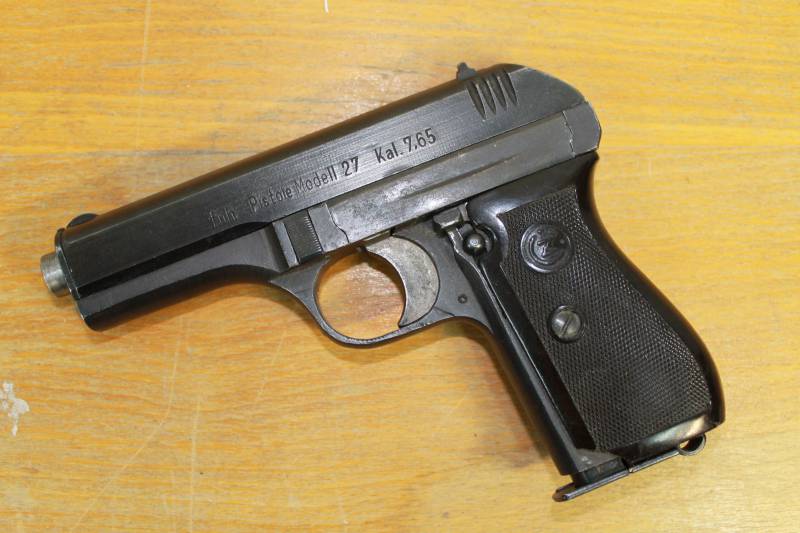
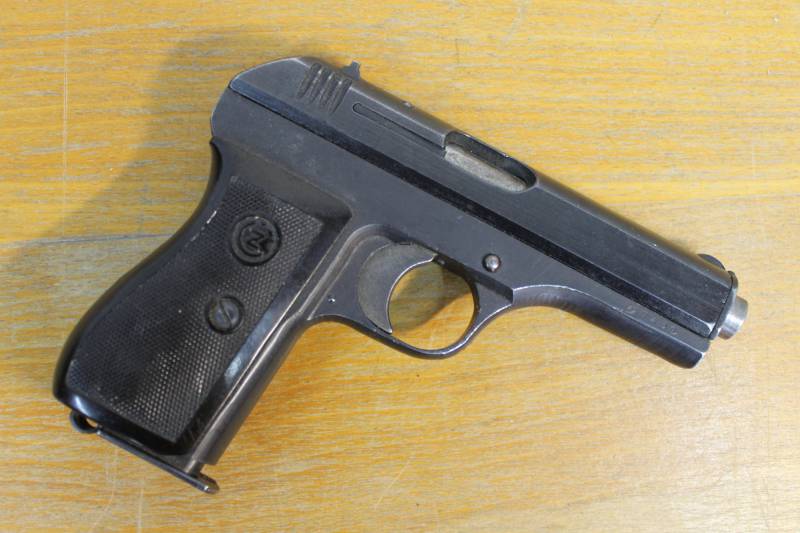
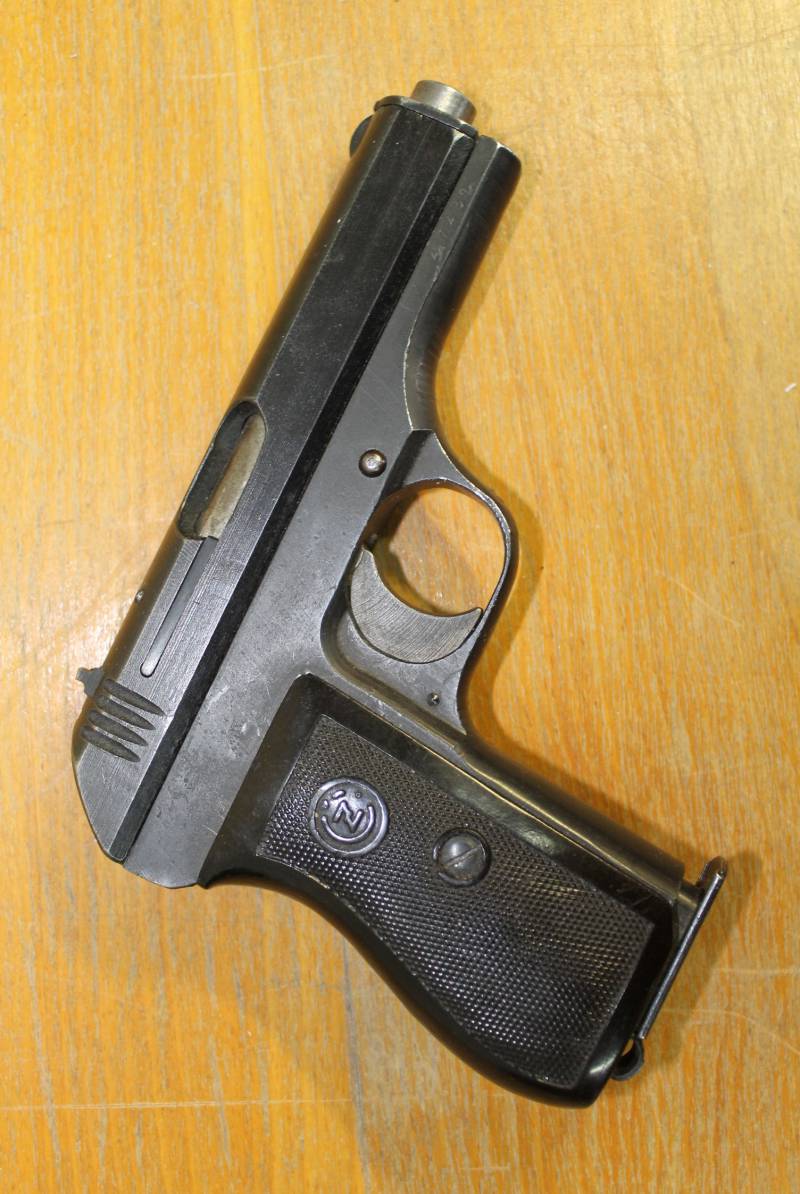
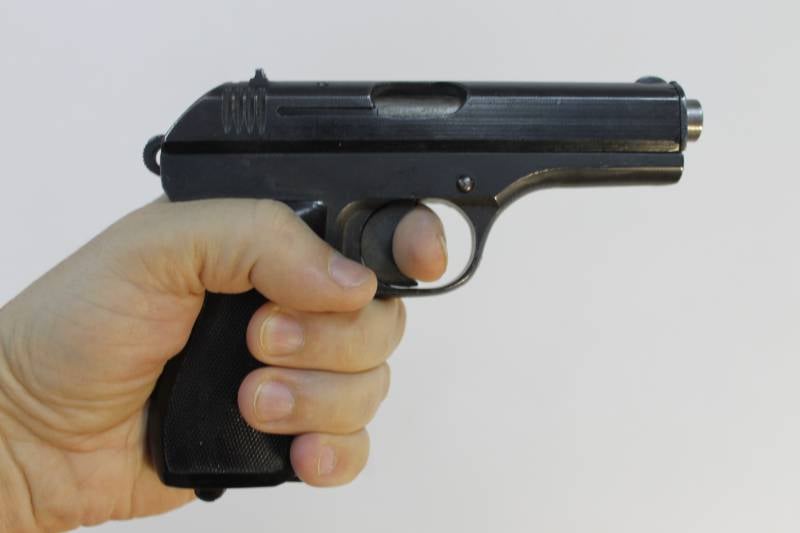
Information